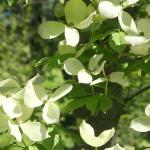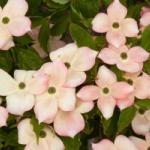A monthly e-newsletter from UMass Extension for landscapers, arborists, and other Green Industry professionals.
To read individual sections of the message, click on the section headings below to expand the content:
Hot Topics
2018 Massachusetts Landscape and Nursery Industry Survey
What are the needs and impacts of our landscaping and nursery businesses?
Please take our survey!
The goal of this survey is to gather information on the issues most important to the landscape and nursery industries in Massachusetts. This information will be used by researchers and Extension Educators at the University of Massachusetts to:
- Develop industry-focused research
- Create needed programming to support the industry
- Provide an overview of the state of the industry
This survey will not only help to focus research efforts, but will also provide insight on how national and state regulations and public perceptions of issues such as the impact of landscapes and plant production on pollinators are impacting the industry in Massachusetts.
The survey should take 10-15 minutes to complete.
If you have any questions or concerns, please contact Mandy Bayer at at abayer10@umass.edu.
New England Greenhouse Webinar Series
Check out the lastest webinar from the New England Greenhouse webinar series!
Ticks are active at this time!
Remember to take precautions when working outdoors and to conduct daily tick checks. The UMass Amherst Laboratory of Medical Zoology tests ticks for Lyme Disease and other tick-borne pathogens. Visit the Tick Report website for more information.
Questions & Answers
Q: What can I do to protect my flowering dogwood (Cornus florida) from dogwood anthracnose?
A: Dogwood anthracnose is a serious disease of flowering dogwood caused by the non-native fungal pathogen Discula destructiva. Symptoms include leaf spots and blotches, shoot blight and perennial stem cankers that disfigure or kill landscape trees. Infections by D. destructiva often result in a proliferation of epicormic shoots (also known as water sprouts) from main scaffold branches or the main trunk, reducing the aesthetics of the tree. Flowering dogwood (C. florida) and Pacific dogwood (C. nutalli) are highly susceptible, while Kousa dogwood (C. kousa) is highly resistant. Additional dogwoods common in landscape settings, such as red twig (C. sericea), corneliancherry (C. mas), pagoda (C. alternifolia) and Tartarian (C. alba), exhibit strong resistance as well.
The first and most important factor to consider when managing dogwood anthracnose is the location of the tree. Flowering dogwood should be planted in full sun settings only. Disease severity is inversely related to the amount of sunlight the tree receives; therefore, as shade exposure increases, so does disease severity. If an established tree resides in deep shade, the odds of effective management without aggressive chemical treatment can be low. Second, prune to increase sunlight and air flow throughout the canopy, especially in the lower canopy where shade and moisture can linger. Third, dead shoots and stems that develop in the canopy as a result of infection should be regularly pruned to reduce inoculum. The fungus overwinters within cankers on blighted stems and branches and, by removing these dead plant parts, we can improve the appearance of the tree and reduce the physical presence of the pathogen. Fourth, avoid needless stress and injuries that weaken a tree’s natural defenses. Create a large mulch ring around the tree to help the roots retain moisture and to limit contact with mowers and string trimmers. Injuries to the trunk can invite secondary pests like the dogwood borer.
If fungicides will be used, we must first weigh the cost of treatment with the likelihood of success. Fungicides should not be used alone, but in combination with the cultural management techniques described above. Fungicides applied during the spring when shoots and foliage are developing will help protect these sensitive plant parts. Many anthracnose fungi are most active in the spring during wet and mild weather, only to go dormant during the mid-summer period when conditions are warmer and drier.
Nicholas J. Brazee, UMass Extension Plant Pathologist
Trouble Maker of the Month
Invasive Oriental Bittersweet, Celastrus orbiculatus
This woody perennial reproduces sexually by seed and asexually by creeping roots that sprout to form new stems. Oriental bittersweet can be observed growing as a brushy groundcover to a height of a few feet or as a climbing vine on tall trees where the vines may reach 40 to 60 feet with a diameter of 3 to 4 inches. Trees and shrubs are often killed by the climbing vines.
Fruits are readily consumed by various birds and other small animals. Consumption of fruit by animals is known to aid in the spread of this invasive plant. Oriental bittersweet is rarely affected by insect pests and disease organisms, which allows populations to grow unchecked. Humans can play a role in the spread of this invasive when they decide unwisely to use it as an ornamental plant in landscaping or collect branches of the colorful fruits for ornamental purposes.
Very similar to Oriental bittersweet is our native American bittersweet (Celastrus scandens). American bittersweet has elliptical rather than rounded leaves, and the flowers and fruit of the female plants occur in a single clump at the tips of the stems (terminal) rather than spread along the stems (axillary). Male flowers of the native may occasionally occur along the stems. In areas where both species occur, it is possible for hybrids to develop. Pollen of these rare hybrids are reported to have low viability.
Physical/Mechanical: Oriental bittersweet is a prolific seed producer and seedlings/small plants are very common. As part of an ongoing maintenance program, these seedlings/small plants should be pulled by hand as they appear. After Oriental bittersweet is controlled with herbicides, physical removal should be used as part of an ongoing management program to prevent regrowth.
Herbicides: Foliar applications of glyphosate will not control Oriental bittersweet. These applications will only cause temporary yellowing and the plant will recover in a short period of time. Foliar applications of triclopyr are a better postemergence choice. Both glyphosate and triclopyr can be used as a cut stem/cut stump treatment however. Selection of foliar versus cut stem/cut stump treatments will be determined by the growth habit (low-growing groundcover or tree-climbing vine) of the Oriental bittersweet. Triclopyr can also be applied a basal bark treatment.
Randy Prostak, UMass Extension Weed Specialist
Plant of the Month
Cornus x rutgersensis - The Rutgers Hybrids
In Massachusetts, May is a month when many plants come into bloom, filling the landscape with much needed color, especially after a cold winter and a cold beginning to spring. One of the native trees seen blooming in the early weeks of May is the native dogwood, Cornus florida. Cornus florida is a much-planted tree and admired by many, but, it is also, unfortunately, susceptible to the disease dogwood anthracnose and to an insect, the dogwood borer, both of which may cause plant decline and death. Flowering dogwood is also not very drought tolerant.
There are, however, other dogwoods available, like Cornus kousa (Kousa dogwood), which blooms in June, that are resistant to dogwood borer, dogwood anthracnose and are also more drought-tolerant. Besides Cornus kousa, there is another group of dogwoods available that are also resistant to dogwood borer, dogwood anthracnose and are also more drought-tolerant and they bloom in May. These dogwoods are referred to as the Stellar Series® and are hybrids between the cross of Cornus florida and Cornus kousa, resulting in Cornus x rutgersensis, and they combine some of the best attributes from both parents.
These outstanding hybrids, Cornus x rutgersensis, were the result of a Cornus (dogwood) breeding program conducted by Dr. Elwin Orton at Rutgers University, New Brunswick, N.J. Dr. Orton’s objectives were to develop and introduce dogwoods that had increased disease and insect resistance, as well as increased vigor and drought tolerance. Dr. Orton’s breeding program was successful, and in the 1990’s he introduced six Cornus x rutgersensis hybrids in the Stellar Series®. Five of the hybrids display white flowering bracts: Aurora®; Celestial® (Galaxy); Constellation®; Ruth Ellen®; and Stardust®. The sixth hybrid, Stellar Pink®, produces pink flowering bracts. As they are reportedly sterile, these Stellar Series® dogwood hybrids do not produce messy fruit and unwanted seedlings. Foliage on all the hybrids is a dark green in the growing season and may exhibit a reddish-purple color in the fall.
The six hybrids are mid-size in height and width, depending on which hybrid, and like their parents do not overwhelm a landscape. They may be used in many landscape locations where a mid-sized tree is called for, such as a specimen tree or in a mixed shrub/perennial border. Depending on which hybrid, Cornus x rutgersensis begins to bloom usually in mid-May, just as Cornus florida is ending bloom and before Cornus kousa begins to bloom. The bloom period is approximately three weeks, making for an extended dogwood flowering season, especially if the landscape features Cornus florida, Cornus x rutgersensis, and Cornus kousa.
Cornus x rutgersensis is hardy to zone 5, has no significant insect or disease problems, and has increased vigor and drought tolerance. It grows and flowers best in full sun, in an organic, moisture-retentive, well-drained soil.
The Stellar Series® dogwoods may be difficult to find, but for their increased sustainability, they are worth seeking out.
Deborah C. Swanson, Horticulturist
Upcoming Events
Landscape Pests and Problems Walkabout - Diseases and Weeds
Get some hands-on experience scouting and identifying landscape diseases, insects, weeds, and abiotic problems. Join Randy Prostak, Extension Weed Specialist and Nick Brazee, Extension Plant Pathologist, for a walk through the landscape as they discuss and demonstrate how to put IPM practices to work efficiently and examine some of the most common pest and cultural problems of woody ornamentals.
- When: Wednesday, May 16, 2018; 5:00pm-7:00pm
- Where: Stanley Park; Westfield, MA
- Registration
Other Upcoming Events:
- 6/6: Landscape Pests and Problems Walkabout - Insects and Cultural Problems
- 6/20: Weed Walkabout
- 8/9: Landscape and Forest Tree and Shrub Insect Workshop
For more information and registration for any of these events visit the UMass Extension Landscape, Nursery, and Urban Forestry Program Upcoming Events Page.
Additional Resources
For detailed reports on growing conditions and pest activity – Check out the Landscape Message
For commercial growers of greenhouse crops and flowers - Check out the New England Greenhouse Update website
For professional turf managers - Check out Turf Management Updates
For home gardeners and garden retailers - Check out home lawn and garden resources. UMass Extension also has a Twitter feed that provides timely, daily gardening tips, sunrise and sunset times to home gardeners, see https://twitter.com/UMassGardenClip
Diagnostic Services
A UMass Laboratory Diagnoses Landscape and Turf Problems - The UMass Extension Plant Diagnostic Lab is available to serve commercial landscape contractors, turf managers, arborists, nurseries and other green industry professionals. It provides woody plant and turf disease analysis, woody plant and turf insect identification, turfgrass identification, weed identification, and offers a report of pest management strategies that are research based, economically sound and environmentally appropriate for the situation. Accurate diagnosis for a turf or landscape problem can often eliminate or reduce the need for pesticide use. For sampling procedures, detailed submission instructions and a list of fees, see Plant Diagnostics Laboratory
Soil and Plant Nutrient Testing - The University of Massachusetts Soil and Plant Nutrient Testing Laboratory is located on the campus of The University of Massachusetts at Amherst. Testing services are available to all. The function of the Soil and Plant Nutrient Testing Laboratory is to provide test results and recommendations that lead to the wise and economical use of soils and soil amendments. For complete information, visit the UMass Soil and Plant Nutrient Testing Laboratory web site. Alternatively, call the lab at (413) 545-2311.





